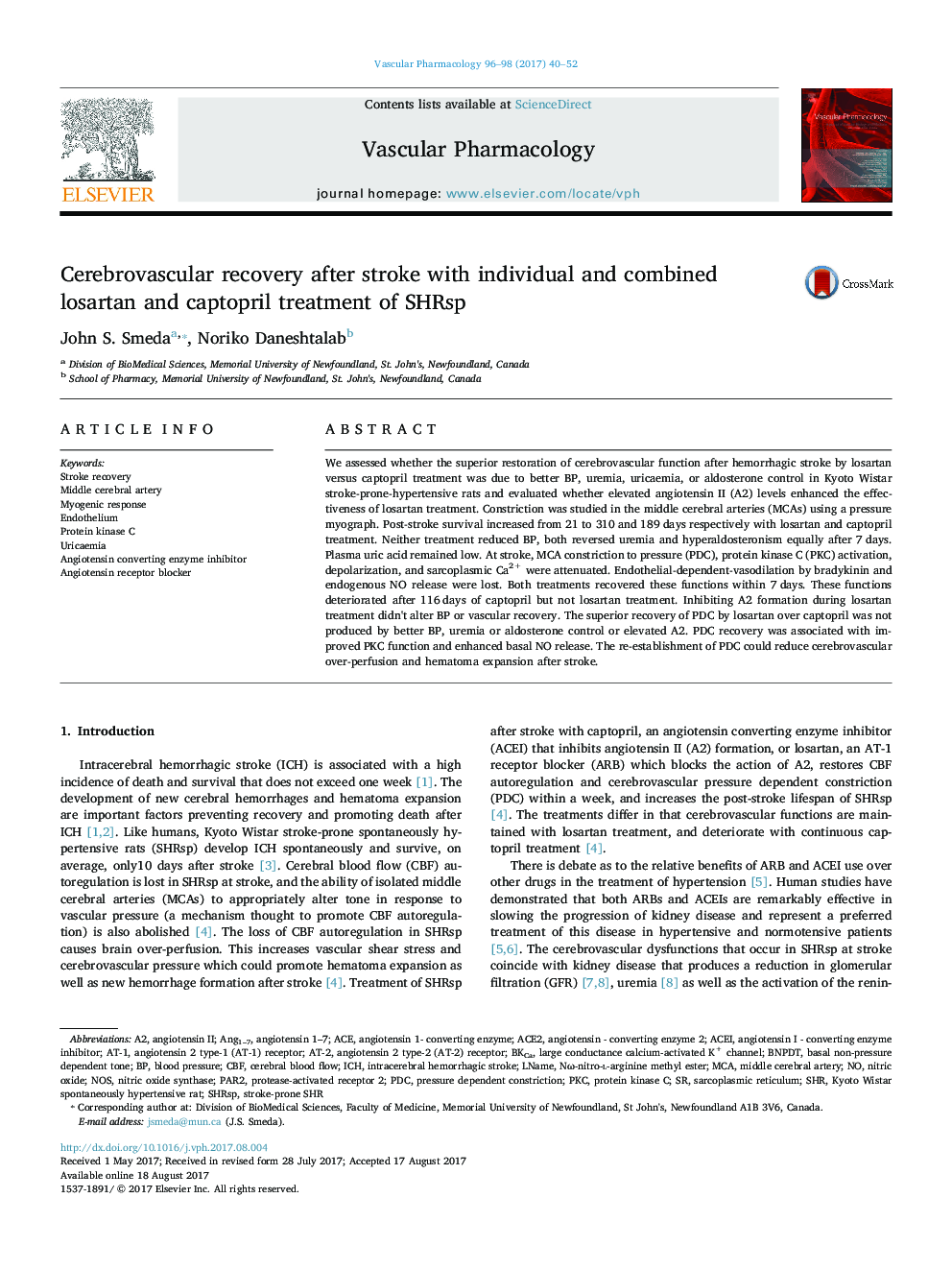| Article ID | Journal | Published Year | Pages | File Type |
|---|---|---|---|---|
| 5558897 | Vascular Pharmacology | 2017 | 13 Pages |
We assessed whether the superior restoration of cerebrovascular function after hemorrhagic stroke by losartan versus captopril treatment was due to better BP, uremia, uricaemia, or aldosterone control in Kyoto Wistar stroke-prone-hypertensive rats and evaluated whether elevated angiotensin II (A2) levels enhanced the effectiveness of losartan treatment. Constriction was studied in the middle cerebral arteries (MCAs) using a pressure myograph. Post-stroke survival increased from 21 to 310 and 189Â days respectively with losartan and captopril treatment. Neither treatment reduced BP, both reversed uremia and hyperaldosteronism equally after 7Â days. Plasma uric acid remained low. At stroke, MCA constriction to pressure (PDC), protein kinase C (PKC) activation, depolarization, and sarcoplasmic Ca2+ were attenuated. Endothelial-dependent-vasodilation by bradykinin and endogenous NO release were lost. Both treatments recovered these functions within 7Â days. These functions deteriorated after 116Â days of captopril but not losartan treatment. Inhibiting A2 formation during losartan treatment didn't alter BP or vascular recovery. The superior recovery of PDC by losartan over captopril was not produced by better BP, uremia or aldosterone control or elevated A2. PDC recovery was associated with improved PKC function and enhanced basal NO release. The re-establishment of PDC could reduce cerebrovascular over-perfusion and hematoma expansion after stroke.
Graphical abstractDownload high-res image (320KB)Download full-size image
